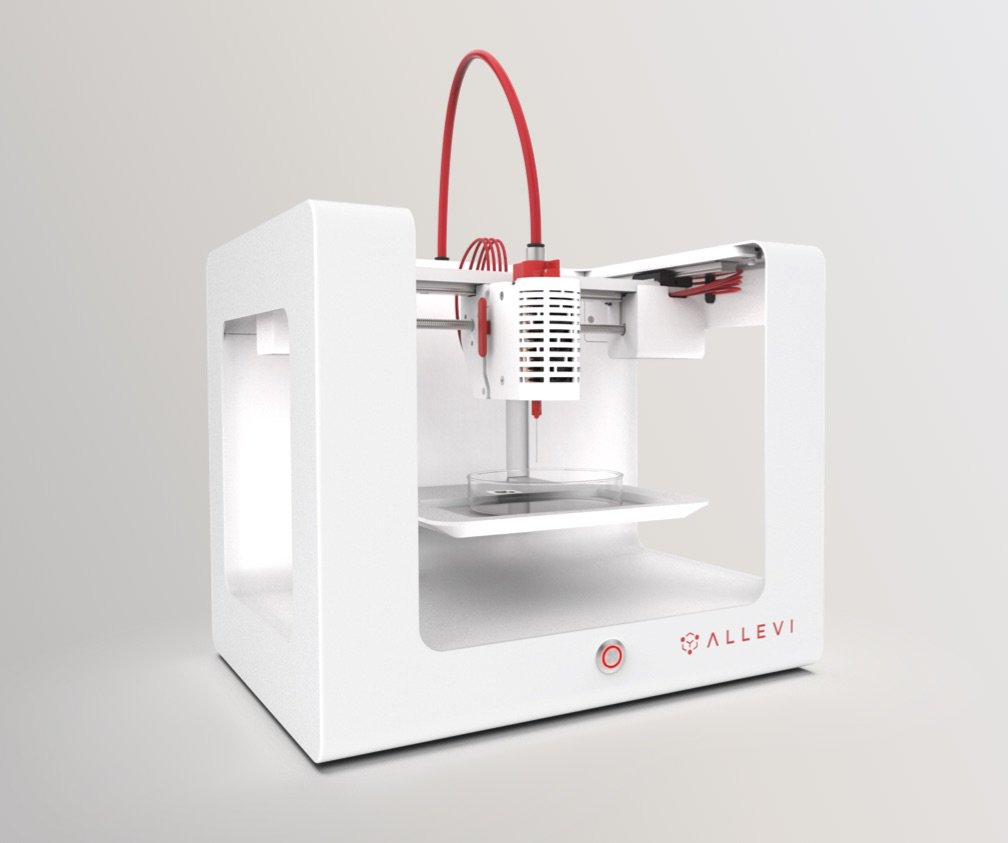Allevi, the 3D bioprinting company formerly known as BioBots, has launched the Allevi 1 3D bioprinter. Capable of 3D printing with collagen, protein inks, and biopolymers like PLGA, the new system is a versatile tool for laboratories, helping to spread Allevi’s mission of making 3D tissue engineering easier, and more accessible.
The perfect lab tool
Around 90% of Allevi customers are academics. Papers citing the hardware have been written at Massachusetts Institute of Technology (MIT), the Wake Forest School of Medicine, and the University of Wollongong in Australia.
At these research universities and more, Allevi 3D bioprinters have been used to make lab-on-a-chip type devices, scaffolds for cell cultures, and bone grafts. The systems are also used to test new materials, and develop a homogeneity for 3D bioinks.

Allevi systems
Allevi’s product range currently covers three systems in total – the Allevi 2 dual extrusion bioprinter; the Alevi 6 with six printheads; and now the single extrusion Allevi 1.
According to the company, the Allevi 1 has “the smallest footprint, widest material capabilities and best price tag of any 3D bioprinter on the market.”
Prices for each of the systems are available on request.
For 3D printed skin models and more
Extrusion temperature on the Allevi 1 can be controlled for cooling (up to 4°C) or heating (up to 200°C). The wide temperature range means that the system can be used with a broad range of materials, including “living inks” containing stem cells, curable inks, and collagen, a key component of skin fabrication.
Measuring 12 in x 10 in x 10 in, the Allevi is designed to be easily moved from bench to bench, and occupy very little lab space.
As a single extrusion system, it is the simplest Allevi 3D bioprinter to use, making it an ideal introductory system for characterising materials and learning the basics.
In addition, as with all Allevi 3D bioprinter, the Allevi 1 is an open system, allowing researchers to use their own materials.
The Allevi 1 3D bioprinter is available to buy now from the Allevi website. Full technical specifications can be seen below.

Technical specifications
Dimensions: 12 in x 10 in x 10 in
Weight: 14 lb (6.4 kg)
Power requirement: 110V – 240V
Connectivity: USB
Operating Systems: PC and Mac OS
Construction: Aluminum frame
Stepper motors: 0.9 degrees step angle
X,Y Precision: 10 microns
Z Precision: 10 microns
Extruder: Single, heating and cooling
Max temp – low: 4°C
Max temp – high: 200°C
Photocuring: 365 nm or 405 nm
Accepted print files: .stl, GCode
Printing technology: FDM/FFF
Build volume: 9 cm x 13 cm x 6 cm (W x L x H)
Print resolution: 150 micron
Build structure: Petri dish, tissue culture plate
For more of the latest 3D printing hardware, software and materials releases subscribe to the most widely read newsletter in the industry, follow us on Twitter, and like us on Facebook.
Could the Allevi 1 be 3D printer of the year? Nominations for the 2018 3D Printing Awards close today.
Protolabs is sponsoring the 2018 3D Printing Industry Awards design competition. Submit your design now to win a 3D printer.
The Allevi 1 3D bioprinter. Image via Allevi



